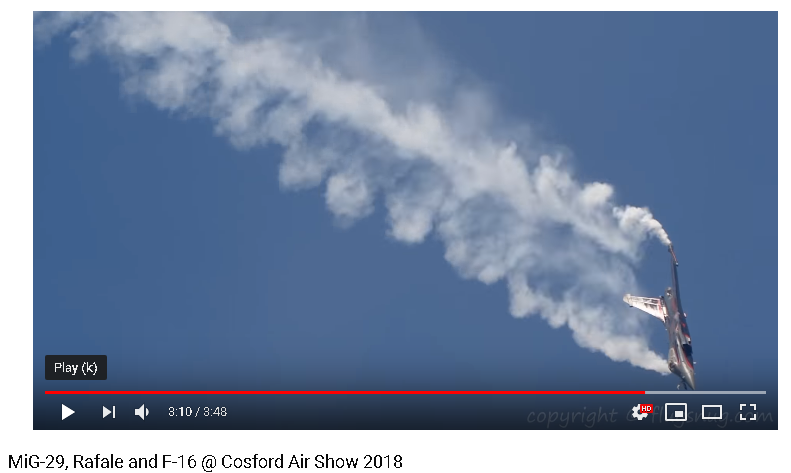AOA versus pitch
Thread Starter
Join Date: Dec 2008
Location: Birmingham
Age: 39
Posts: 181
Likes: 0
Received 0 Likes
on
0 Posts
AOA versus pitch
Hello Folks,
just about to recap the AF447 accident and i have something fundamental i do not understand:
During the accident, the flight had around 8-10° of pitch indicated in the PFD. But the AOA was about 30-40°. I understand the aoa is the angle between relativ airflow and the chord etc. But how can the pitch be 10° and the aoa much higher? I mean the airfoil represents approximately the structure of the aircraft. Or is the wing angle relativ to the aircraft Body that different?
Thanks Folks!
SW
just about to recap the AF447 accident and i have something fundamental i do not understand:
During the accident, the flight had around 8-10° of pitch indicated in the PFD. But the AOA was about 30-40°. I understand the aoa is the angle between relativ airflow and the chord etc. But how can the pitch be 10° and the aoa much higher? I mean the airfoil represents approximately the structure of the aircraft. Or is the wing angle relativ to the aircraft Body that different?
Thanks Folks!
SW
Using your figures, with a pitch attitude of 10 and an AoA of 40, that would mean that the Flight Path Vector was 30 below the horizontal. In other words, the aircraft was descending very steeply but with its nose above the horizon.
A drawing would help:
Sketch a side-view of an A330 with its nose about 10 above the horizontal.
Add an arrow from the CofG pointing down at 30 from the horizontal.
The angle between the longitudinal axis of the aircraft and the arrow is the Angle of Attack, which is 10+30=40.
As an extreme example, if the aircraft was flying with the nose level (zero pitch) but descending vertically, the AoA would be 90.
I understand that even if the Flight Path Vector had been displayed on the accident aircraft, due to the extreme angle it would not have been visible below the bottom of the screen.
Hope this helps?
A drawing would help:
Sketch a side-view of an A330 with its nose about 10 above the horizontal.
Add an arrow from the CofG pointing down at 30 from the horizontal.
The angle between the longitudinal axis of the aircraft and the arrow is the Angle of Attack, which is 10+30=40.
As an extreme example, if the aircraft was flying with the nose level (zero pitch) but descending vertically, the AoA would be 90.
I understand that even if the Flight Path Vector had been displayed on the accident aircraft, due to the extreme angle it would not have been visible below the bottom of the screen.
Hope this helps?
With the high AoA and a normal airspeed structural failure would seem quite likely. In this case structural failure was avoided since the transition to high AoA occurred at low airspeed. Then the high drag consequent from the high AoA held the airspeed low. My (compete guess) is that for a given airspeed the maximum force on the wings would be generated before the wing stalled at about 15 degrees AoA.
As I recall, to be very brief, some airspeed indicator(s) failed, the flying pilot held nose-up-stick until the actual airspeed fell (and with it the lift), and then held the stick back as the aircraft descended with a high AoA, and indeed with the nose above the horizon. Everyone sat about looking at each other until it was too late to recover. I can't recall exactly but they only had a minute or two to decide what to do. Six miles at two or three miles a minute.
The cockpit environment was very confusing of course, especially for the non-flying pilots.
Here are some examples of Differing pitch attitudes and AoA.
Sadly pprune does not allow youtube links with time offsets so you will have to sort that out yourself to see images in context.
I am assuming that there are no camera tricks and that the camera provides an accurate horizontal reference. Considering the whole video this seems a reasonable assumption. I have never been an aerobatics pilot and have estimated the AoA (and pitch). I think the numbers are good enough to illustrate the point. The AoA can be estimated from the smoke trails although of course there are various wing tip vortices messing around with the smoke I think the images are sufficient to get a decent idea of what is going on.
Pitch -90 AoA +25

Pitch +30 AoA +25

Pitch +45 AoA +30

Pitch +12 AoA +30
This is quite like the pitch and AoA of AF 447. If this aircraft had a low airspeed here at it's low altitude it would surely crash. As it is the airspeed is sufficient and the airframe can operate at the high angle of attack. See leading edge droops.

Pitch +5 AoA -15
Check pitch - I have never flown inverted and I am not sure if I am describing the pitch correctly. Nose seems above horizon and so I think pitch is +ve.

Images all from this video.




